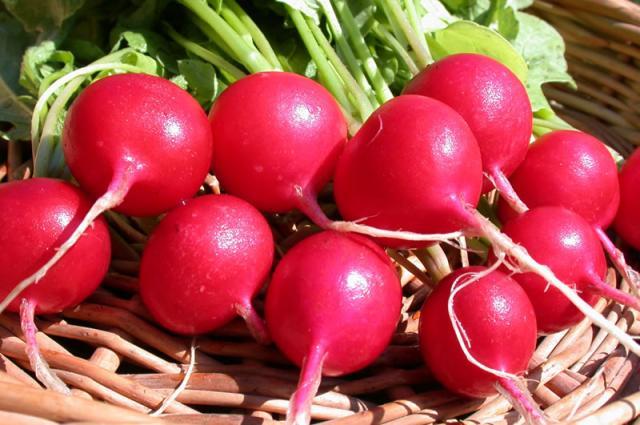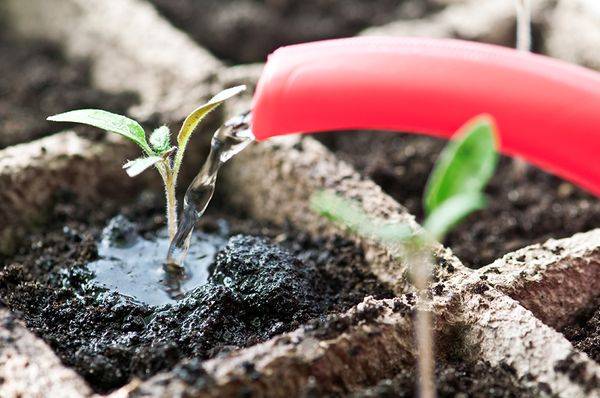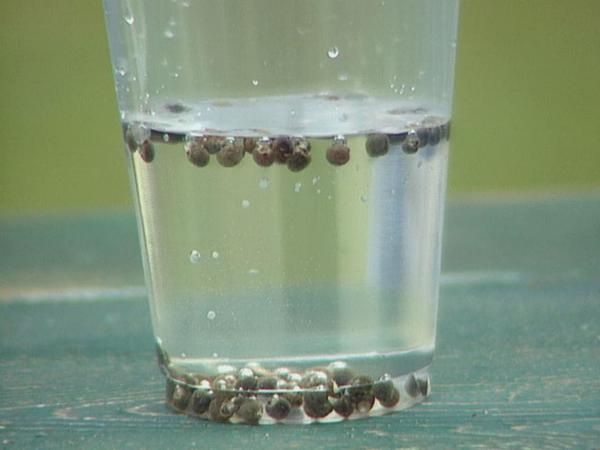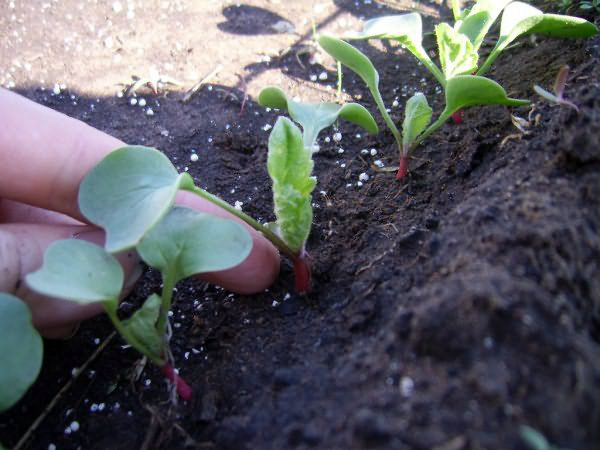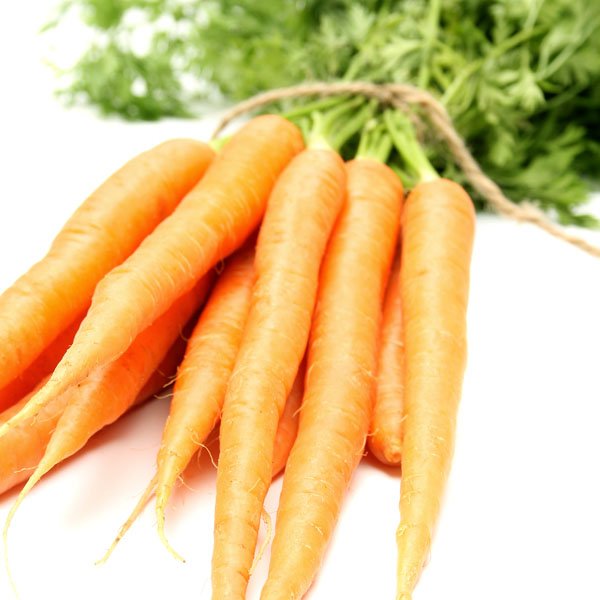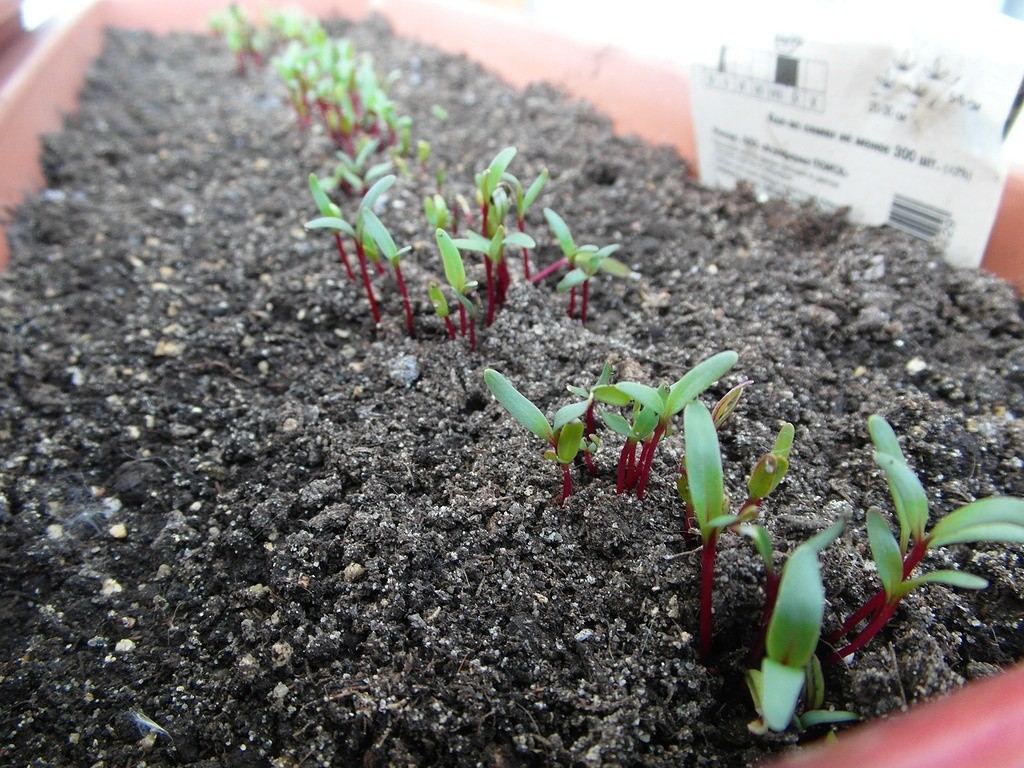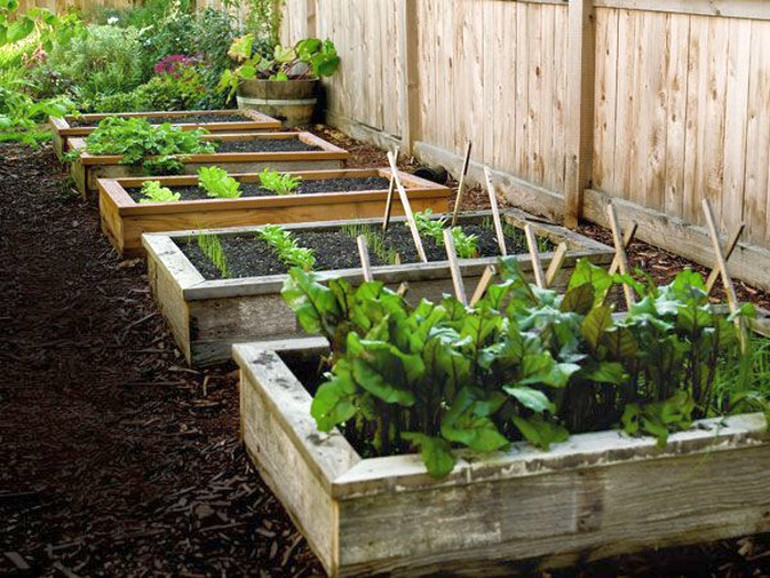Content:
Radish (or as gardeners call it - radish) is the earliest vegetable grown in open ground and greenhouses. This culture is an annual herb, consisting of a basal rosette of large light green petiole leaves. The commodity part of radish is a rounded, cylindrical or conical root vegetable of red, pink, raspberry or beige color, weighing from 7-10 to 20-30 g.
Growing conditions
To obtain an early and high yield, one should take into account the exactingness of this crop to soil, light and moisture.
The soil
It grows best on fertile, slightly acidic or neutral sandy loam and loamy soils, with a humus content of at least 3.0%.
Illumination
Radish loves well-sunlit areas. At the same time, the duration of daylight hours should not exceed 10 hours: if the day lasts more than 10 hours, the culture instead of the root crop will begin to form a peduncle ("throws out the arrow", "shoots").
Humidity
Like all root crops, radishes love high soil moisture (about 60-70%). With a lack of moisture in the soil, seedlings will be weak, the root crop will form small with a rough and thick skin. An excess of moisture can cause cracking of root crops, yellowing of leaves.
He does not like radish flooding of the root system with groundwater and top water. Therefore, for sowing it, you should choose areas where the upper level of groundwater is located at least 60 cm from the surface.
Temperature background
Radish seeds germinate at + 3 + 4 ° C. The most optimal temperature for the growth and development of this culture is + 16 + 20оС. Seedlings can withstand a short-term drop in temperature down to -2-3 ° C.
Long-term frosts cause seedling death.
In this article, in addition to the standard growing technology, we will consider how to plant radishes in egg cells, how to get seeds on your own, how to plant and grow radishes at home (on a windowsill, window, balcony).
Reproduction of culture
This culture is propagated only by seeds. You can get seeds yourself as follows:
- Choose a ripe root crop and carefully dig it out;
- All leaves, with the exception of one young, are removed at the base of the root;
- The root crop is transplanted to a new place, watered thoroughly;
- After some time, a long arrow with flowers is formed from the root;
- Conical pods are formed from flowers;
- When the pods turn yellow, they are cut along with the tops and dried in the shade;
- After that, the pods are separated from the tops, placed in a container and ground with a rolling pin;
- The resulting mixture of seeds and husks is poured with water and, by thorough stirring, the heavy seeds are completely settled to the bottom;
- The husk is removed with a slotted spoon;
- The water is drained and the seeds are collected from the bottom of the container.
The seed obtained in this way is dried on a newspaper and placed in paper bags.
Sowing with seeds
One of the main ways to grow radishes in the open field and greenhouses is to plant them with seeds.
It is convenient to sow radish seeds outdoors in egg trays. The step-by-step process for such sowing is as follows:
- In the fall, the site for sowing crops is dug to a depth equal to the bayonet of a shovel. When digging, organic and mineral fertilizers are applied in the following doses per 1 square meter:
- Humus - 1 bucket (5-6 kg);
- Double granular superphosphate - 2 tablespoons (30 g);
- Potassium sulfate - 2 tablespoons (30 grams).
- In the spring, the soil of the site is loosened to a depth of 10-12 cm, while making 1 sq. M. 1.5-2 tablespoons of ammonium nitrate (25-30 g);
- At the pyramidal recesses of the egg trays, the tip is cut off;
- The cassette (tray) is laid on the loosened earth so that the earth protrudes from the holes in the recesses;
- Before sowing, seeds are germinated in warm water for 12-18 hours;
- Before sowing the radishes into the egg cages, each of them is fastened to the adjacent and to the ground with a wire clip;
- In the recesses of the trays with holes and the soil protruding through them, one seed is sown;
- The trays are sprinkled with peat or sand and watered abundantly;
- The bed is covered with foil;
- The optimal time to sow radishes with seeds in this way is early spring.
Planting radish seeds in egg cells allows you to grow this crop without such laborious operations as weeding, loosening between rows. The trays will act as mulch, preventing the development of weeds and evaporation of soil moisture.
Planting seedlings
Much less often, but radishes are also grown in seedlings. To do this, you can not only grow seedlings in the classical way in wooden or plastic boxes, but also use such a proven method of obtaining planting material, as forcing seedlings in "rolls". The essence of this method is in the following operations:
- Seeds purchased in the store are calibrated, disinfected in a solution of potassium permanganate;
- The base of the rolling tape is made from two plastic food bags. To do this, they are folded in half lengthwise;
- Two layers of toilet paper are placed on top of the bags;
- Using a hand sprayer, the paper is abundantly moistened;
- Seeds are laid on paper with a distance between adjacent ones of at least 3-4 cm;
- From above, the seeds are covered with another layer of paper;
- The tape is rolled into a compact roller (roll);
- The rolls are placed in a container with a small layer of water (1-1.5 cm) at the bottom;
- The container is covered with a bag and placed in a dark and warm place;
- When shoots appear, the roll is placed in a bright room;
- As the seedlings grow, they dive into pots and boxes.
Planting seedlings in open ground or in a greenhouse is done when 3-4 true leaves appear. For early plantings, the largest and strongest plants are chosen. The rest are grown and planted later.
The planting material obtained by this technology (seedlings) when planted in open ground allows you to get an early and higher yield of radish.
Culture care
AT during the growth and development of radishes sown in egg trays, they carry out:
- Watering - water the radish once a week when it rains and 2-3 times during prolonged drought and hot weather. Watering is done in the evening when the sun is low above the horizon. Water consumption during irrigation is on average 10-12 l / m2;
- Top dressing - on completely fertilized soils, radishes can be grown without top dressing, as this causes abundant growth of tops, the accumulation of nitrates in root crops;
- Pest and disease control - The main pest of this crop is cruciferous fleas. To combat them, the plants are sprayed with a solution of soapy water, ash, infusion of tansy, and powdered with tobacco dust.
How to grow radishes at home
Many apartment owners in the absence of a summer residence have no choice but to grow radishes at home. This process, although simple, requires a careful approach to each of its components.
Growing radishes at home has a technology consisting of the following stages:
- Calibration and disinfection of seeds;
- Disinfection of the substrate with a solution of potassium permanganate;
- Backfilling the substrate into a volumetric box - a drainage layer 2-3 cm thick is placed on the bottom of the box, and the prepared substrate is poured;
- Sowing seeds into grooves to a depth of 1.0 cm;
- Thinning as collapses appear; they are thinned out, making the distance between two adjacent shoots at least 5 cm;
- To provide the seedlings with the sunlight they need, they are placed on the windowsill, the southern window. If the winter is mild, with frequent thaws, then for hardening the container with radishes is taken out to the glazed balcony;
- As the seedlings grow and develop, they are watered, and the substrate is gently loosened.
Correct sowing and care using this technology allows you to grow radishes and get tasty and large root crops all year round.
Harvesting
Ripe roots are harvested in the early morning, the next day after abundant watering. The tail and all the leaves are removed from root crops, they are tied 3-4 pieces in compact bunches and placed in a plastic bag, which is placed on the lower shelf of the refrigerator. It can be stored in this state for up to 3-4 weeks.
Beautiful and tasty radishes are the pride of every gardener. This crop can show high yield and quality of root crops only if the technology of its cultivation is observed, the correct choice of the site for its sowing. In addition to open ground and greenhouses, the harvest of tasty and healthy radishes can also be obtained in an apartment or a private house.
